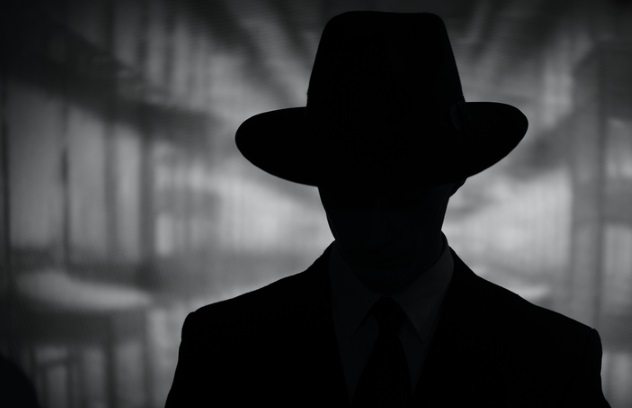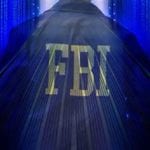 Mysteries
Mysteries  Mysteries
Mysteries  History
History 10 Surprising Stories About the Texas Rangers
 Humans
Humans 10 Philosophers Who Were Driven Mad by Their Own Theories
 Miscellaneous
Miscellaneous 10 Video-Game-Worthy Weapons and Armors from History
 Weird Stuff
Weird Stuff 10 Psychics Who Accurately Predicted Wartime Events
 The Arts
The Arts 10 Pieces of Art Inspired by a Broken Heart
 Health
Health 10 Science Fiction-Sounding New Medical Treatments
 History
History 10 Surprising Facts About the Father of Submarine Warfare
 Space
Space Ten Astonishing New Insights into Alien Worlds
 Weird Stuff
Weird Stuff 10 Bizarre Summer Solstice Rituals Still Practiced Today
 Mysteries
Mysteries Top 10 Haunting Facts About the Ghost Ship MV Alta
 History
History 10 Surprising Stories About the Texas Rangers
 Humans
Humans 10 Philosophers Who Were Driven Mad by Their Own Theories
Who's Behind Listverse?

Jamie Frater
Head Editor
Jamie founded Listverse due to an insatiable desire to share fascinating, obscure, and bizarre facts. He has been a guest speaker on numerous national radio and television stations and is a five time published author.
More About Us Miscellaneous
Miscellaneous 10 Video-Game-Worthy Weapons and Armors from History
 Weird Stuff
Weird Stuff 10 Psychics Who Accurately Predicted Wartime Events
 The Arts
The Arts 10 Pieces of Art Inspired by a Broken Heart
 Health
Health 10 Science Fiction-Sounding New Medical Treatments
 History
History 10 Surprising Facts About the Father of Submarine Warfare
 Space
Space Ten Astonishing New Insights into Alien Worlds
 Weird Stuff
Weird Stuff 10 Bizarre Summer Solstice Rituals Still Practiced Today
Top 10 FBI Fails
Sometime in 2011, businessman Brooks Kellogg paid an undercover FBI agent posing as an assassin $2,000 to kill a former business associate. The undercover agent was bugged with a secret camera that was supposed to record the meeting. However, things went awry when prosecutors realized that the camera didn’t record anything useful, since the men didn’t sit facing each other. As if that wasn’t enough, the audio didn’t record their conversation.[1]
Kellogg could have gotten away due to the lack of incriminating evidence, but he was finally sentenced to six years in prison and ordered to pay a $100,000 fine. Kellogg’s case was hardly the first time the Federal Bureau of Investigation botched an operation or did something ridiculous. Here are ten times the FBI failed badly.
10 It Deliberately Used Someone Else’s Picture On Bin Laden’s Wanted Poster

In 2010, the FBI created an edited photograph of what they thought Osama bin Laden should look like. No one had seen bin Laden in a while, so all they could do was speculate—add gray hairs, wrinkles, and so on. To achieve this, the FBI got a 1998 picture of Bin Laden and edited it with “cutting edge” technology. The FBI was dead serious when it said “cutting edge,” since an agent literally cut and pasted the facial features of a Spanish politician called Gaspar Llamazares onto that of bin Laden. The end product ended up looking more like Llamazares than bin Laden.
This did not sit well with Llamazares, who stated that he would no longer felt safe, as he might be mistaken for bin Laden, who, at this point, was even safer. It wouldn’t have sat well with bin Laden, either, since his turban was missing, and his trademark long beard had been replaced with Llamazares’s trimmed beard. The FBI later revealed that an agent had downloaded Llamazares’s image from the Internet and added his features to bin Laden. So much for cutting edge.[2]
9 Its Philadelphia Office Was Burgled

On March 8, 1971, eight members of the Citizens Commission to Investigate the FBI, a civil rights and anti-war group that was against the Vietnam War, broke into the FBI’s office in Philadelphia and made off with as many as 1,000 classified documents. The documents revealed the FBI’s Counter Intelligence Program (COINTELPRO), a clandestine operation meant to factionalize and generate mistrust among civil rights groups and to destroy the credibility of activists like Martin Luther King.
As hilarious as it sounds, the activists didn’t break in with anything elaborate: just a crowbar and a man who knew how to pick locks. The operation was well-planned, though. In FBI fashion, the activists surveilled the agency’s building and monitored the movements of its agents. One of the members, Bonnie Raines, the wife of John Raines, who was behind the whole thing, even posed as a college student and interviewed some agents for a nonexistent school project about job opportunities for women in the FBI.
The activists broke in the same night Muhammad Ali fought Joe Frazier in the famous Fight of the Century, when they knew that the people inside were likely to be distracted by their radios. The agents only realized their folly after the break-in and came up with a sketch of the supposed college student but couldn’t put a name to her. The break-in infuriated FBI director J. Edgar Hoover, who dispatched over 200 agents to capture the supposed burglars. They were unsuccessful.[3]
8 The Agent In Charge Of New York Lost The Counterterrorism Plans For The City

In July 2000, top FBI agent John O’Neill lost a briefcase containing several classified documents. One of the documents was the Annual Field Office Report, which contained details of all active counterespionage and counterterrorism operations in New York. Another document contained information about an FBI informant.
O’Neill had lost the briefcase at a hotel conference room while he left to attend an FBI meeting. It was later recovered, and the documents were checked for fingerprints to confirm whether they had been tampered with. No fingerprints were found. It was speculated that the briefcase was stolen by thieves and not a foreign intelligence agency.[4] O’Neill retired from the FBI in August 2001 and took a new job as the chief of security at the World Trade Center, where he was killed on September 11, 2001.
7 Agents Forgot A Classified Document In A Suspect’s Home

On September 24, 2010, the FBI raided the homes of seven activists in Minneapolis and Chicago. In the home of couple Mick Kelly and Linden Gawboy, they took documents, books, computers, cell phones, and a passport but left behind their operation order. The order included information about the planning of the operation along with surveillance photographs of the suspects and interrogation questions.
It also contained information regarding suspicions that two of the activists, Merideth Aby and Jessica Rae Sundin, had ties to the Revolutionary Armed Forces of Colombia (FARC). The suspicion arose because the activists had attended a peace summit in FARC-controlled areas in Colombia.
The couple did not immediately find the classified documents, since it was among their own papers scattered across the floor of their home. They just dumped all the papers inside a filing cabinet and only found the document while going through the cabinet seven months later.[5]
6 An Agent Married The ISIS Fighter She Was Investigating

In 2014, Daniela Greene was an FBI agent tasked with spying on an ISIS fighter and recruiter on social media. The fighter was Denis Cuspert, a former German rapper whose stage name was Deso Dogg. However, he took the name Abu Talha al-Almani after joining ISIS. Cuspert is one of the most ferocious foreign fighters within ISIS ranks and once featured in a video where he held a severed head and threatened then-president Barack Obama.
Somehow, Greene fell in love with Cuspert, who convinced her to come join him in Syria. She told her husband that she was going to visit her parents in Germany before fleeing to Syria through Turkey. She was two weeks into her marriage when she realized that life as an ISIS bride wasn’t that rosy. Months later, she fled back to the US, where she was sentenced to two years in prison.[6]
5 An FBI Agent Crashed A Stolen Ferrari During A Joyride

In 2008, the FBI recovered a 1995 Ferrari F50 during a drug bust in Kentucky. The vehicle had been reported stolen in 2003 and belonged to Motors Insurance, which had already paid out the claim by its original owner. The FBI informed Motors Insurance about the find but refused to release the vehicle. A year later, an agent crashed it while taking an assistant US attorney on a joyride.
The vehicle’s frame broke during the crash, and it suffered some dents and scratches here and there. Motors Insurance sued the US government for $750,000, which was the cost of the vehicle, but the Department of Justice turned down the litigation on the grounds that the FBI was not liable to pay for damages because the vehicle was under detention at the time of the crash.[7]
4 It Allowed A Soon-To-Be Mass Murderer To Legally Buy A Gun

During the night of June 17, 2015, Dylan Roof, a 21-year-old white supremacist, walked into the Emanuel AME Church in Charleston, South Carolina, and joined some worshipers for a Bible study. An hour later, he brought out a handgun and shot nine people dead. All of the victims were black.
Investigations revealed that Roof had used a legally procured gun for the murders, even though he was not supposed to have been able to get one. Ideally, US law requires gun sellers to request background checks on prospective gun buyers from the FBI. The FBI has three days to accept or reject the request. If it does not reply within three days, the seller is allowed to proceed with the sale.
Roof had been charged for possessing narcotics and had confessed his guilt, which was enough for the FBI to reject his request. However, the FBI didn’t reject it because Roof’s information hadn’t been properly entered, and the agency confused two different police departments.
First, there were errors with Roof’s arrest records. The National Instant Criminal Background Check System (NICS) credited his arrest to the Lexington County Sheriff’s Department instead of the Columbia Police Department. The FBI contacted the Lexington County Sheriff’s Department, which told them to check with the Columbia Police Department.
However, the FBI contacted the West Columbia Police Department instead of the Columbia Police Department. The mix-up was caused by the fact that the city of Columbia is split between Lexington and Richland Counties, and both had a similarly named police department. The West Columbia Police Department denied arresting Roof, effectively paving the way for him to get his gun.[8]
3 The FBI Director Called Poland A Nazi Accomplice

FBI director James Comey came under fire in 2015 after he claimed that some Poles aided the Nazis during World War II. In an opinion article written for The Washington Post, Comey stated that he always sent new FBI intelligence analysts and special agents to the Holocaust Museum because he wanted them to see how humans abused their powers. He claimed that the Nazis were aided by good people who turned against their neighbors. The “good people” here were the Hungarians and the Poles.
In his words:
In their minds, the murderers and accomplices of Germany, and Poland, and Hungary, and so many, many other places didn’t do something evil. They convinced themselves it was the right thing to do, the thing they had to do.
This infuriated top Polish officials, who immediately condemned the article and requested an apology from the US ambassador to Poland. Ambassador Stephen Mull clarified that the US held Nazi Germany responsible for atrocities committed during the war.[9] Hungary also joined Poland in condemning the FBI chief. While Hungary initially cooperated with the Nazis, it was later invaded and occupied by them when it attempted to negotiate a peace treaty with the Allies. Poland, on the other hand, did not cooperate with the Nazis but was invaded and occupied.
2 It Let A Top Nazi Spy Off The Hook

In 1938, a year before World War II officially began, the FBI busted a Nazi spy ring in the US. The bust started with the arrest of Rumrich, a Nazi spy who was caught trying to impersonate the US secretary of state. Rumrich’s handlers had ordered him to get 35 blank US passports for some spies Germany wanted to send to Russia.
Rumrich rang the New York passport office, claimed he was the secretary of state, and requested that 35 blank passports be sent to a hotel in Manhattan. He then called Western Union to pick up the passports at the hotel and send them to the telegraph office, where he intended to pick them up. Rumrich was arrested while picking up the passports and did not waste time in exposing other Nazi spies. The leader of the spy ring was Ignatz Griebl, who himself didn’t waste time in exposing other agents. All were arrested.
However, the FBI goofed when one of its agents informed the spies that they would testify before a grand jury. With this information, most of the agents, including Griebl, escaped, leaving only Rumrich and two others to face justice.[10] Griebl’s escape was the most surprising, since he was supposed to be in the FBI’s custody, considering his role as the leader of the spy ring. However, the FBI never took him into custody. Instead, they made him take a lie detector test and released him without even bothering to monitor his movements.
1 It Used The Wrong Video For A Wanted Murderer

James “Whitey” Bulger is a murderer, extortionist, drug dealer, money launderer, and organized crime boss, and he was the FBI’s most wanted American for 16 years before his arrest. The FBI wanted to get their hands on him so badly that his wanted poster was just below that of Osama bin Laden on their website. Bulger himself used to be an informant for the FBI, and he used his position to snitch on his rivals. He was almost arrested in 1995, but a corrupt FBI agent tipped him off.
What followed was a 16-year manhunt that took the FBI through the US, the UK, France, Italy, Ireland, Thailand, Brazil, and Spain. The FBI caught him in the most impossible of ways: by paying for television adverts requesting information on the movements of his girlfriend, Catherine Greig. The FBI bought advertisement slots on television programs watched by women in their sixties (which was Greig’s age range) and offered a reward of $2 million to anyone with information that could lead to her arrest.
The plan worked, and the couple were arrested in Santa Monica, California, 48 hours later. Pakistan’s ambassador to the US compared Bulger and Greig’s arrest to the tracking down of bin Laden, stating that, “If Whitey Bulger can live undetected by American police for so long, why can’t Osama bin Laden live undetected by Pakistani authorities?”
A few years before capturing Bulger, the FBI had found a video of a couple, who they mistook for Bulger and Greig. The video was shot at a resort in Sicily, and the couple were traced to Germany. An FBI agent appeared on a German crime program requesting information about the whereabouts of the fugitive couple. The couple in the video later came forward to inform the FBI that they had been mistakenly identified and were not the fugitives they were after.[11]
Read about more law enforcement bungles on 10 Undercover Operations That Just Didn’t Work Out and Top 10 Forensic Fails.








